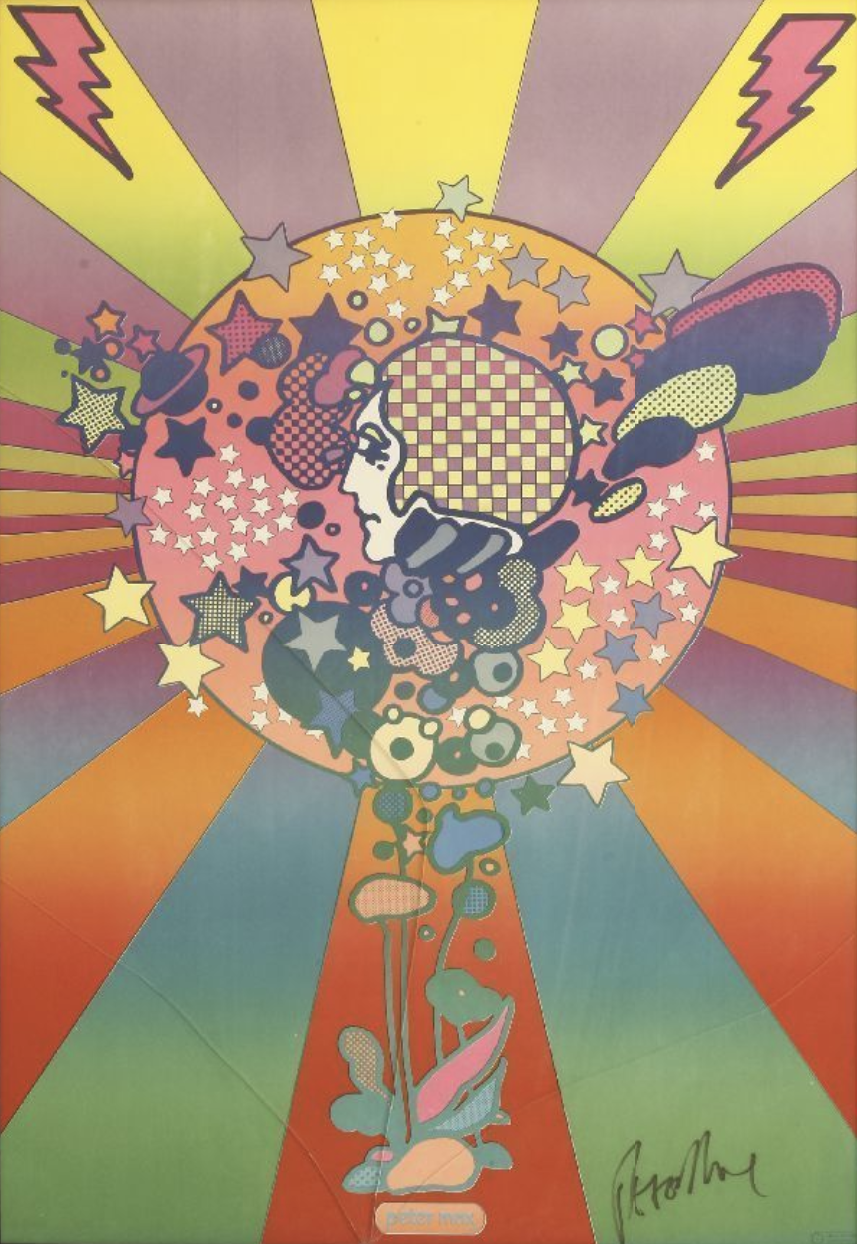
Peter Max
Adam Cosmo, 1970s
Throughout history – more specifically, throughout art history – stylistic movements are founded and key individuals emerge as ceremonial figureheads of their respective genres. Consider Claude Monet as one such example for impressionism, Picasso for cubism, Jackson Pollock for abstract expressionism, and Andy Warhol for pop art. While each of these names, however influential and prolific they may have been, not to mention important to the progression of their field, are merely isolated examples amongst a sea of talent, many of whom were oftentimes these artist’s contemporaries. While the passing of time does little to challenge this trend of artistic natural selection, the flipside of such a divisive tactic is the joy of shedding light on some of these lesser-known names. Case in point, artist Peter Max.
Born in Berlin in 1937, Max spent his youth moving around the world with his family. After fleeing Germany in 1938, prior to the onset of WWII, the Max’s lived in Shanghai, China and Israel, before finally settling in Brooklyn, New York in 1953. Three years later and still a teenager, Peter Max began his formal art training at the Art Students League in Manhattan. Initially interested in the study of human anatomy and figure drawing, Max soon found his calling in the fields of pop art and neo-expressionism.
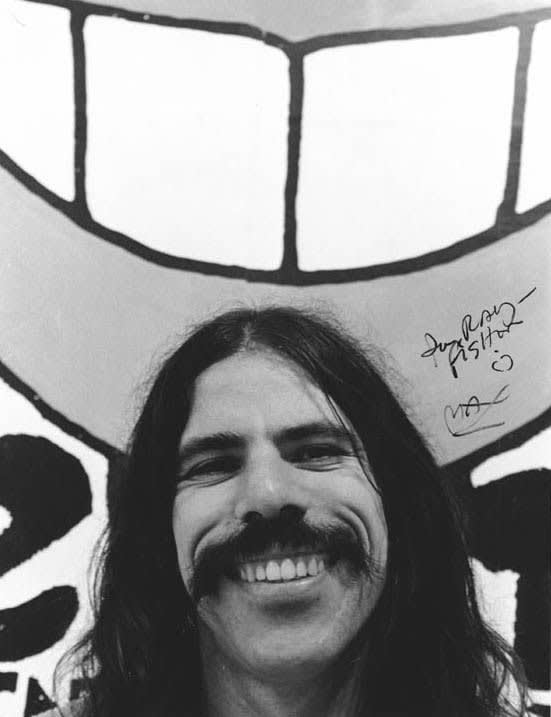
Ray Fisher
Portrait of Peter Max, 1970s
Widely associated with the counter culture and psychedelic movements of the latter 1960s and early 1970s, Max’s career closely mirrored that of Andy Warhol’s, through its aesthetic focus, his unique visual style, and use of a wide range of artistic media. Similar to the king of pop art, Max worked in a variety of formats, including painting, drawing, sculpture, collage, printmaking, and video and digital imagery. His penchant for bursts of color, a majority of his work contains much or all of the visible spectrum, and fluid hand, resonated deeply with the era’s bohemian aesthetic.

Peter Max
Man Must Moon, 1969
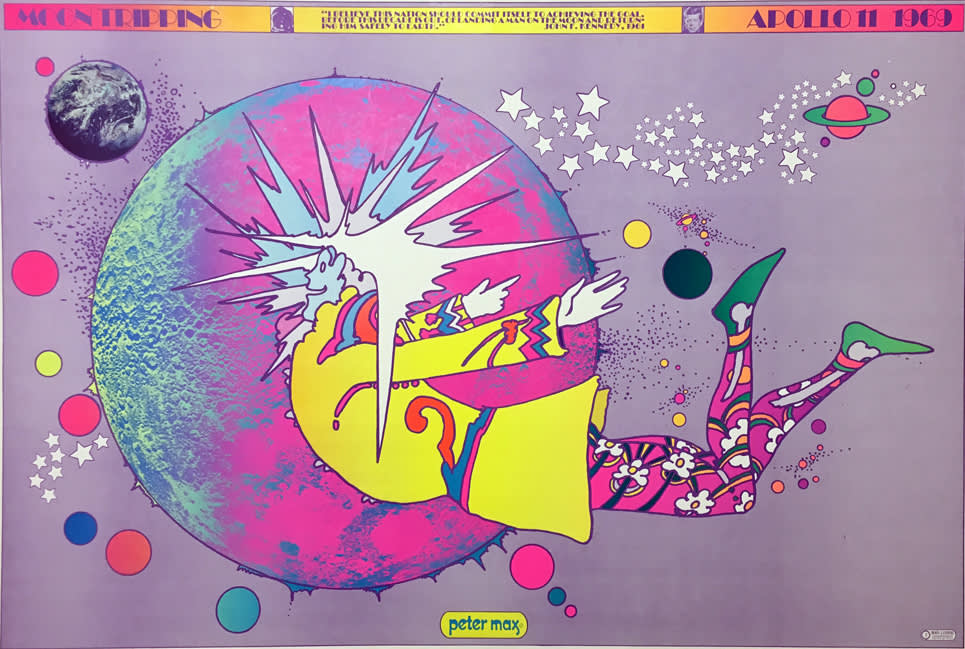
Peter Max
Moon Landing, 1969
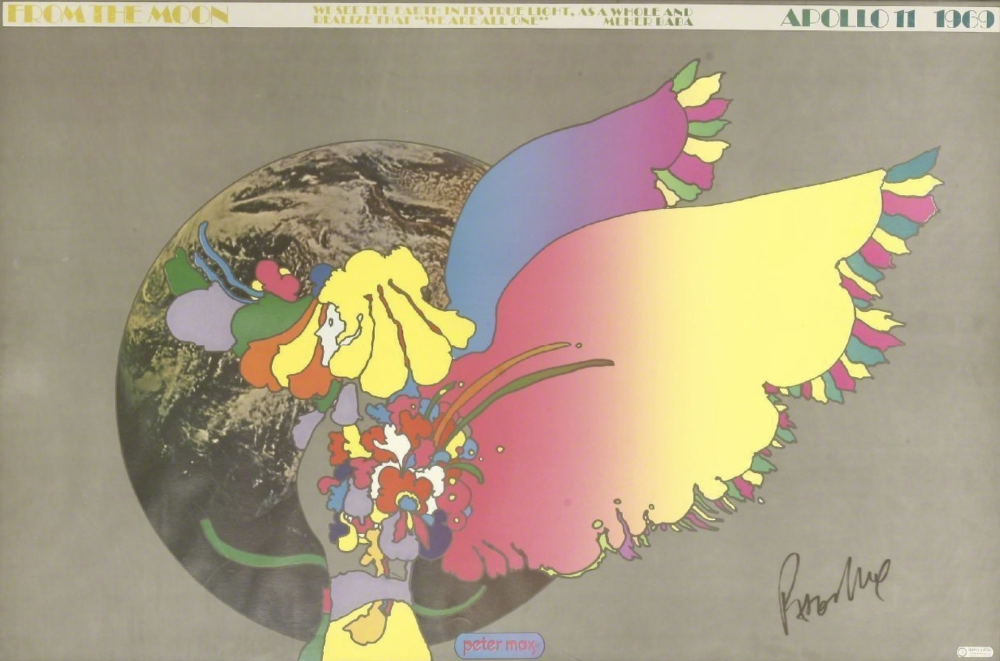
Peter Max
From The Moon, 1969
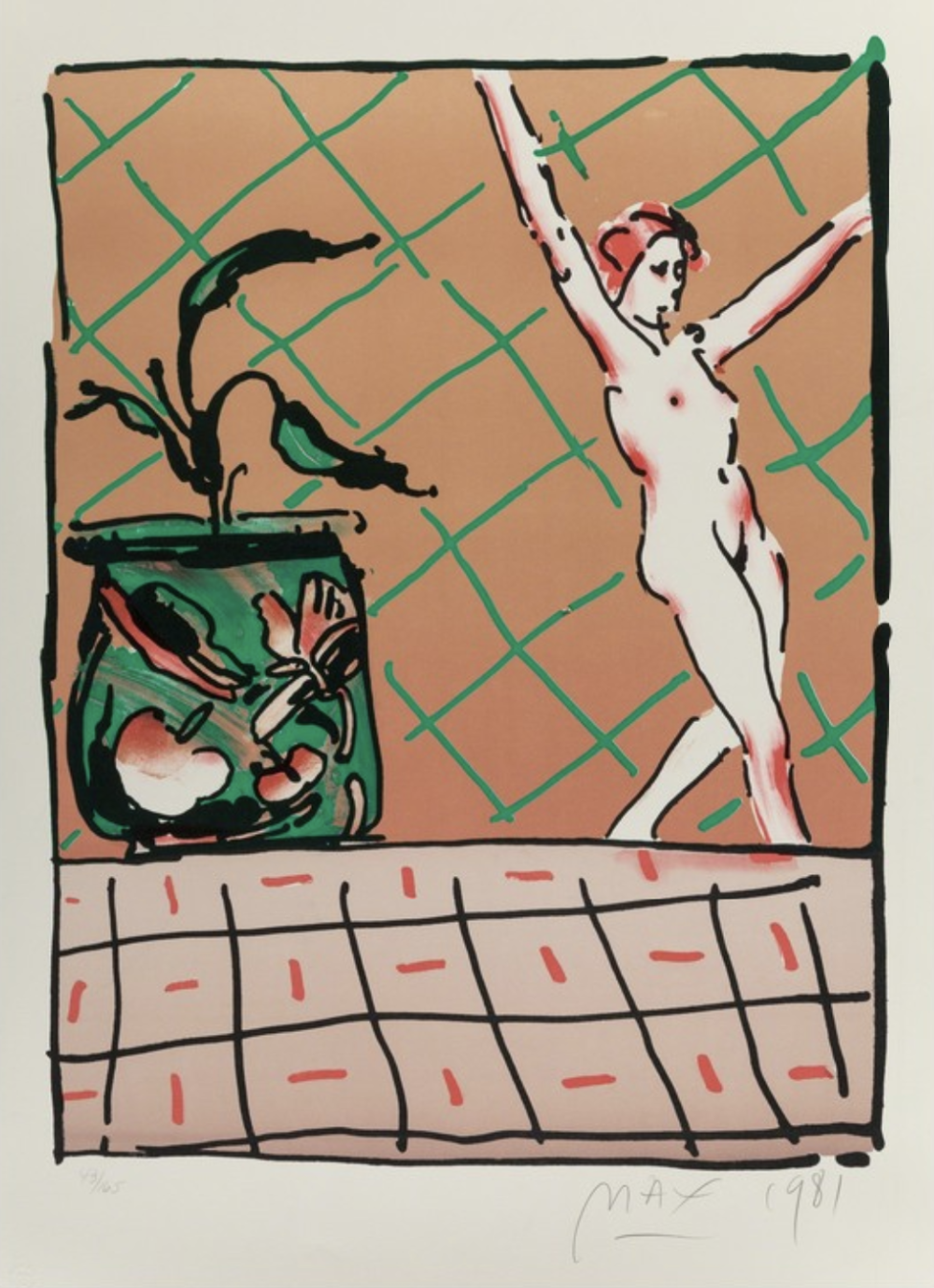
Peter Max
Ballet Story, 1981
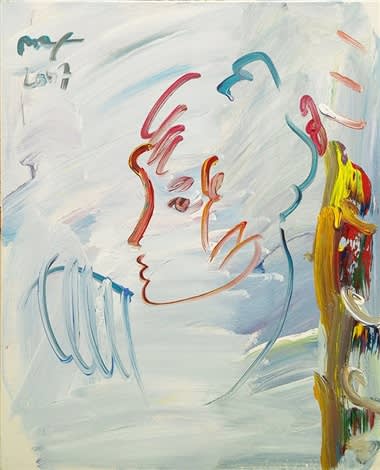
Peter Max
Cloudy Profile, 2007
Emerging as a leader and creative voice of psychedelic art, Max’s trademark use of modern American icons and dreamlike symbols defined the hippie generation. His early focus on celebrities, politicians, musicians, athletes and other pop culture subjects in his work – again, begging comparison to Warhol – served as a gateway to his later success in the fields of graphic design and advertising. Considering mass media as yet another canvas for his modes of creative expression, by the 1970s Max’s style was internationally recognized, leading to a wealth of notable commissions in the film, music and media space. After appearing on the cover of LIFE Magazine in 1969, Max was hired by the United States Postal Service to create the 10-cent postage stamp, for which he drew a psychedelic scene with a ‘Cosmic Jumper’ against clouds and sun rays, centered around the theme of ‘Preserve the Environment.’
Peter Max
Ronald Reagan, 1989
Peter Max
Nelson Mandela, 2001
Peter Max
Bono, 2003
LIFE
Peter Max Cover, September 1969
Peter Max
Cosmic Jumper Stamp, 1974
His work in poster design and collaboration with the Woodstock Festival carried throughout the 1970s and led to later commissions as the official artist for countless major events, including the 1994 World Cup, the Grammy Awards, the Rock and Roll Hall of Fame, the Super Bowl and the 2000 Subway Series. Likewise, in 1993 Max was one of a handful of artists commissioned by NBC to create a variation of their famous peacock logo, while more recently his artwork “44 Obamas,” commemorating Barack Obama, the 44th President of the United States, first appeared on CBS.
Peter Max
World Cup Poster, 1994
Peter Max
Grammy Poster, 1991
Peter Max
Rock and Roll Hall of Fame Poster, 2015
Peter Max
Super Bowl Poster, 1995
Peter Max
Subway Series, 2000
Peter Max
NBC Logo, 1993
Peter Max
Obama to the Max, 2009
Peter Max
Obama to the Max (Set of 9), 2009
While Peter Max is still living and working today, applying his trademark style to a new era of subjects and sources of inspirations, his position as the voice of an entire generation has somewhat expired. Nonetheless, whether you know his work or not, Max remains a figurehead of the 1970s aesthetic, oftentimes overshadowed by his contemporaries, but still not forgotten. His work is referenced more today than he is often credited for, and will remain a vision of hippie nostalgia for generations to come.



